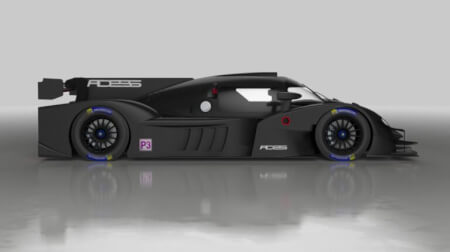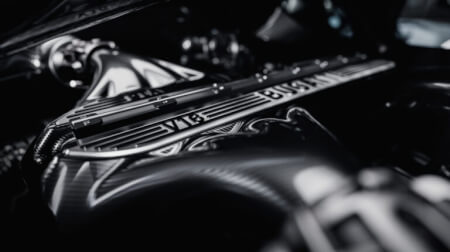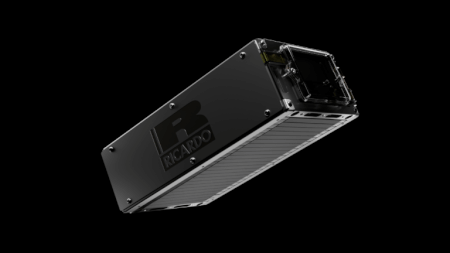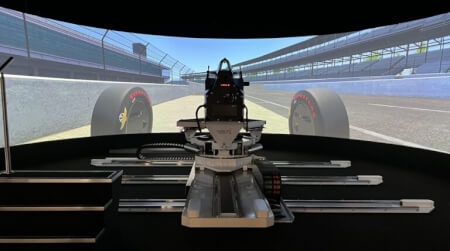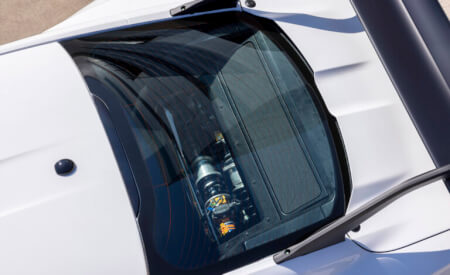February 1st 2023
Renault completes testing of Clio Rally3, homologation due in April
Renault unveiled its Rally3 variant of the Clio earlier in January, the second manufacturer to unveil after M-Sport with its Fiesta. The first four-wheel-drive version of the Clio to be developed for rallying, the car has been designed and built by engineering teams at Renault’s Dieppe and Viry-Châtillon operations.
It is powered by a 1.3-liter TCe 16-valve turbocharged I4 engine with direct injection, the same as the Rally4 car, but with power and torque increased to 260bhp and 415Nm respectively, following what Renault says were nearly 300 calibration studies. The engine is mated to a 5-speed Sadev gearbox with a limited-slip differential. The lubrication of the engine and transmission was an area of intense development, to account for the greater grip potential of the all-wheel-drive chassis.
Thanks to its relationship with the Alpine F1 outfit in Enstone, UK, the Viry-Châtillon team was able to draw on the former’s aerodynamics expertise and resources to design elements of the car, including the rear wing which it says is, “simple in appearance, but highly effective.” Meanwhile, damping duties are taken care of by Bos-supplied coilovers, with braking systems supplied by PFC. Life Racing provides the vehicle electrics system covering engine management and data logging.
Thanks to its relationship with the Alpine F1 outfit in Enstone, UK, the Viry-Châtillon team was able to draw on the former’s aerodynamics expertise and resources to design elements of the car, including the rear wing which it says is, “simple in appearance, but highly effective.” Meanwhile, damping duties are taken care of by Bos-supplied coilovers, with braking systems supplied by PFC. Life Racing provides the vehicle electrics system covering engine management and data logging.
Development of the Clio Rally3 began on May 24, 2022 and was completed six months later in Spain after 22 days and more than 4,500km of testing on tarmac and gravel with eight drivers and 11 co-drivers representing a broad range of experience. Renault says the car met all the objectives set for it, including reliability and performance indicators on representative stages and in a variety of conditions, to prepare it as much as possible for its racing future.
Homologation is due to be completed by April 2023, after which the car will be made available to customers. Order books are now open.
Clio Rally3 – technical data (subject to homologation)
Chassis
Base – Clio R.S. Line with roll cage
Body/type – arc-welded steel monocoque
Safety – multipoint roll cage
Aerodynamics – rear wing
Base – Clio R.S. Line with roll cage
Body/type – arc-welded steel monocoque
Safety – multipoint roll cage
Aerodynamics – rear wing
Engine
Type – Renault HR13 4-cylinder, 16-valve
Layout – front engine
Displacement – 1,3303
Maximum power – 260hp
Torque – 415Nm
Maximum RPM – 7,400rpm
Turbocharger – 31mm restrictor
Fuel delivery – direct injection
Cooling – standard derivative
Electronic management – Life Racing
Fuel – SP98 standard
Lubricants – Castrol
Type – Renault HR13 4-cylinder, 16-valve
Layout – front engine
Displacement – 1,3303
Maximum power – 260hp
Torque – 415Nm
Maximum RPM – 7,400rpm
Turbocharger – 31mm restrictor
Fuel delivery – direct injection
Cooling – standard derivative
Electronic management – Life Racing
Fuel – SP98 standard
Lubricants – Castrol
Transmission
Type – integral, four-wheel drive
Gearbox – Sadev ST4-82, 5-speed sequential + reverse
Selector – gearshift with electric release MAR
Tunnel – Sadev SP02
Differential front/rear – ZF limited-slip
Clutch – Sachs dual disc
Type – integral, four-wheel drive
Gearbox – Sadev ST4-82, 5-speed sequential + reverse
Selector – gearshift with electric release MAR
Tunnel – Sadev SP02
Differential front/rear – ZF limited-slip
Clutch – Sachs dual disc
Running gear and suspension
Axle front/rear – Pseudo McPherson
Dampers – Bos Suspension with three-way adjustment and hydraulic stop
Brakes front tarmac – Ø 330 x 28mm, 4-piston calipers – PFC Brakes
Brakes front gravel – Ø 294 x 28mm, 4-piston calipers – PFC Brakes
Brakes rear tarmac/gravel – Ø 294 x 28mm, 4-piston calipers – PFC Brakes
Handbrake – hydraulic
Steering – electrically assisted
Axle front/rear – Pseudo McPherson
Dampers – Bos Suspension with three-way adjustment and hydraulic stop
Brakes front tarmac – Ø 330 x 28mm, 4-piston calipers – PFC Brakes
Brakes front gravel – Ø 294 x 28mm, 4-piston calipers – PFC Brakes
Brakes rear tarmac/gravel – Ø 294 x 28mm, 4-piston calipers – PFC Brakes
Handbrake – hydraulic
Steering – electrically assisted
Wheels
Wheels – aluminum, 6×15” (gravel), 7×17’’ (tarmac)
Tires – Michelin
Wheels – aluminum, 6×15” (gravel), 7×17’’ (tarmac)
Tires – Michelin
Dimensions, weight and capacities
Length/width/height – 4,050/1,988/1,400mm
Wheelbase – 2,585mm
Wheel track front/rear – 1,520/1,520mm
Fuel cell – 62 liters, FIA FT3 homologated
Length/width/height – 4,050/1,988/1,400mm
Wheelbase – 2,585mm
Wheel track front/rear – 1,520/1,520mm
Fuel cell – 62 liters, FIA FT3 homologated







